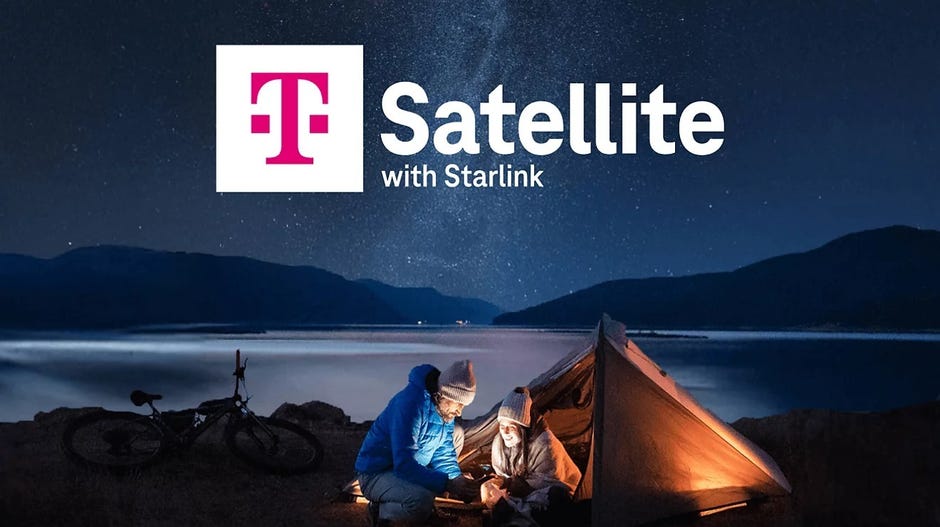
Big news for mobile users! T-Mobile’s collaboration with SpaceX’s Starlink satellite internet service means you can now send texts from basically anywhere in the U.S., even if you’re miles away from the nearest cell tower. This new service, d T-Satellite, will also be rolling out to AT&T and Verizon customers.
According to T-Mobile, their mission is to wipe out those annoying mobile dead zones once and for all. They’re deploying a fleet of 657 Starlink satellites specifically for cellular coverage. After testing in beta since December 2024, nearly 1.8 million people have already signed up!
T-Satellite is considered a huge leap for mobile tech. It’s compatible with many smartphones released over the last four years, so you won’t need special gadgets to use it. For T-Mobile, AT&T, and Verizon customers, it costs $10 per month, but it’s free for those on T-Mobile’s Experience Beyond or Go5G Next plans.
“Being able to send a selfie when there’s no signal is cool, but being able to reach emergency services is the real deal,” said Mike Katz, T-Mobile’s president of marketing, strategy, and products, to CNET’s Jeff Carlson. “With this tech, no one should ever be cut off in an emergency.”
Recently, T-Mobile had to pull out all the stops to support communities hit by severe flooding in Central Texas. With T-Satellite, customers in those areas can now text 911 and get emergency alerts on their devices.
In the future, T-Satellite will also be available for emergency texting nationwide at no cost. Later this year, it’ll be possible for any mobile user with a compatible device to text 911, regardless of their carrier.
What is T-Satellite?
T-Satellite is the result of T-Mobile’s partnership with Starlink to provide direct messaging through satellites in places where normal cellular signals can’t reach. With more than 7,000 Starlink satellites overhead, 657 are dedicated solely to T-Satellite. T-Mobile aims to bridge coverage gaps across 500,000 square miles of territory that traditional towers overlook.
When you’re in an area without coverage, your phone will automatically switch to the satellite network, which is a game changer since many satellite systems currently require manual connections and line of sight.
Phones have had satellite connectivity for a while, especially iPhones since 2022, but it usually has been limited to SOS messaging for contacting emergency help. Come July 23, T-Satellite users with iPhone or Android devices can start sending regular SMS texts. Interestingly, Android users will also have immediate access to MMS, with iPhone support on the horizon. This upgrade means you can send not just texts but also photos and audio clips.
Additionally, starting in October, users will be able to access third-party apps like AccuWeather, AllTrails, WhatsApp, and X for even more functionality, harnessing built-in features from iOS and Android that allow data sending over satellite waves, even with limited bandwidth.
T-Mobile’s T-Satellite initiative is miles ahead compared to other carriers tinkering in the satellite messaging scene. AT&T and Verizon are mainly exploring options with AST SpaceMobile, while Verizon also plans work with Amazon’s Project Kuiper, launched in 2025 with its first satellite batch.
Katz confidently declared, “As for our competitors, they are far behind in this race.”
Cost of T-Satellite
So, how much is this satellite messaging convenience? T-Mobile, AT&T, and Verizon customers can access T-Satellite for a fee of $10 each month. However, if you’re on T-Mobile’s Experience Beyond plan ($100/month) or Go5G Next plan, the service is already included in your subscription! Plus, those with the Experience More plan ($85/month) get it free until the end of this year.
Even without the monthly charge, T-Mobile has stated that 911 texting will be available by the year’s end for any user with a compatible device.
AT&T and Verizon customers will need to activate T-Satellite on a second eSIM to use this service. For more details about setting up your eSIM, check here.
What Phones Work With T-Satellite?
Most devices released recently will be compatible with T-Satellite. Check out the currently supported smartphones:
Apple
- iPhone 13, iPhone 14, iPhone 15, and iPhone 16 (all models)
- Google Pixel 9
- Google Pixel 9A
- Google Pixel 9 Pro
- Google Pixel 9 Pro XL
- Google Pixel 9 Pro Fold
Samsung
- Samsung Galaxy A25 5G SE*
- Samsung Galaxy A35 5G
- Samsung Galaxy A36
- Samsung Galaxy A54 5G*
- Samsung Galaxy S21, S21 Plus, S21 Ultra, S21 FE, S22, S22 Plus, S22 Ultra, S22 FE, S23, S23 Plus, S23 Ultra, S23 FE, S24, S24 Plus, S24 Ultra, S24 FE, S25, S25 Plus, S25 Ultra, S25 Edge
Motorola
- Motorola Edge 2024
- Moto G Stylus 2024
- Moto G 5G 2024
- Moto G Stylus 5G 2024
*Note: Some non-T-Mobile device variants might not support satellite capabilities.
First published on July 23, 2025, at 8:05 a.m. PT.



















